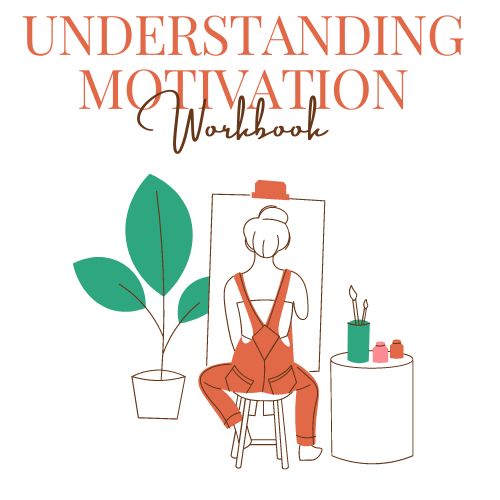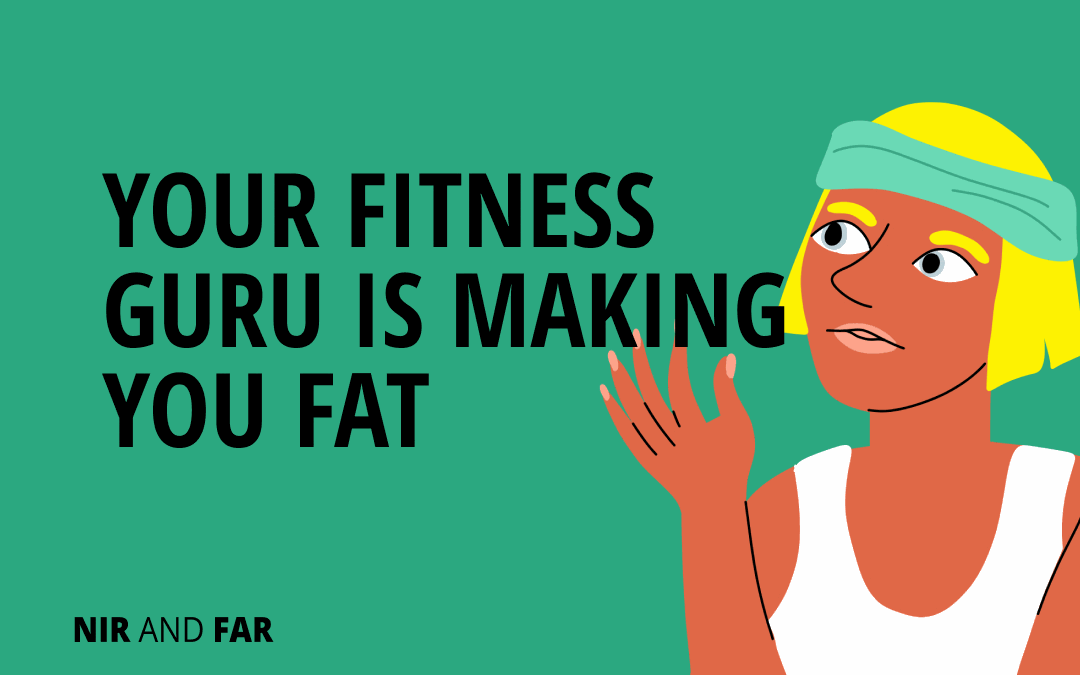Use these 4 Science-Backed Tips for all the Gym Motivation You Need
You could feel the excitement buzzing through the WhatsApp channel. An A-list fitness guru reportedly spending millions of dollars yearly to reverse aging was in town to hold an in-person workout.
Without hesitating, I signed up. I was interested in seeing Mr. Guru in action and eager to be inspired by his approach.
The truth is, I was bothered by the few pounds I had put on over the holidays after relaxing at home with family and indulging in the classic rich foods of the season. It was time to get back to a healthy routine. But as someone who has always struggled with going to the gym consistently, I needed a kick in the butt.
I arrived at the beach with about 40 other people, ready for the calisthenics workout. Mr. Guru started with a pep talk about how we can reverse aging, given we take the proper steps—presumably, his steps. We clapped and began the workout. Well, some of us did.
Surprisingly, after a brief warm-up jog, most people just stood around. Mr. Guru didn’t join the workout either. Instead, he spent the entire session preaching to his fans.
As I huffed and puffed, I began to feel resentful. That resentment grew when, at the café where attendees went to chat after the workout, Mr. Guru served his new powdered superfood concoction—soon available for sale—mixed in olive oil, also available for purchase on his site.
Later, I realized I wasn’t angry with Mr. Guru, who was doing his best to help people get fit while running a business, or his followers, who sought health motivation and information from an expert. I was angry because the event exemplified a sad fact: Listening to fitness gurus is often a distraction.
When Fitness Gurus Distract You From Wellness
We spend precious time scouring social media for that solution that makes exercise and healthy eating easy. (It’s why books and content on habits have exploded in popularity—people think habits will magically make something hard effortless.)
We listen to fitness influencers who tell us about the benefits of their supplement packages and the productive pain of cold plunges and extol their incredibly hard-to-follow diets. Conveniently, they don’t tell us that the most important things to do are the things we don’t want to hear.
Let’s be honest: Don’t we already know how to live healthily?
I’ll quote health guru Michael Pollan, who dared to say it so simply you could put it on a bumper sticker: “Eat food. Not too much. Mostly plants.”
By “food,” he means whole foods. The other cornerstone health rules are similarly blunt: Don’t smoke. Drink very little, if at all. Exercise moderately but frequently.
Most of us know those basics already. Until we implement them, we’re just wasting time and money doing anything else.
The problem with listening to fitness gurus is that their business model depends on harvesting your attention. They need to pump out a constant stream of surprising insights to do that. Telling you the simple truth is, frankly, boring.
You might wonder: Isn’t it important to tune in to fitness gurus sharing the latest health findings?
No, and here’s why.
Their recommendations usually rest on the evidence from very few, if any, quality studies. Let’s not get into how poorly executed most of these studies are—tiny sample sizes and studies that don’t replicate are rife. Unfortunately, even when there is evidence in a study, the real-world implications are often minuscule.
Fitness gurus never explain the difference between whether something has an “effect” and its “effect size,” which measures the significance of the effect. Let me explain.
Mr. Guru and many others tout olive oil as a classic health elixir, but its benefits are small, if practically nonexistent. One of the most exhaustive studies on olive oil and longevity, a 2018 meta-analysis, found that consuming more olive oil had an effect size of just 0.14.
An effect size of 0 means a 50/50 chance that a person who ate more olive oil was better off than someone who didn’t (the control group). So 0.14 is only a smidge better than a coin toss, and given the costs and calories, consuming more olive oil is likely not worth it.
Of course, gurus will tell you there’s something extra special about their particular olive oil concoction, but without quality studies, you’ll have to take their word for it.
Compare olive oil research to studies on VO2 max (a measure of cardiorespiratory fitness) and longevity. Generally, the more someone exercises, the higher their VO2 max. Studies looking at all-cause mortality find that higher physical activity has an effect size in the 0.4 range. Going for a jog or doing calisthenics is free, and the effects are substantial.
Responsible influencers should repeat and exemplify what matters most. Savvy consumers should demand to know whether the juice is worth the squeeze. (Speaking of juicing, that’s also not worth it. The effect size is in the 0.1 range, according to studies.)
Many people don’t want to exercise. I don’t want to exercise either. It hurts, and I’d much rather be doing something else—which is why it wasn’t hard to convince myself that listening to a fitness guru was sort of doing something to improve my health. It was certainly easier than exercising.
Listening to fitness gurus gives us that sweet psychological relief without the hard work. No matter how you look at it, looking for magic solutions yields zero effect size and zero results.
But that’s not to say there are no hacks to (re)starting a fitness routine.
The 4 Ways I Motivate Myself to Exercise
1. Consistency Over Intensity
The best thing you can do when building a workout routine is to focus on doing it when you say you will.
I don’t care how light your workout is—as long as you do it when you plan to. Consistency over intensity!
Timebox your workouts in a weekly calendar (try my free schedule maker) and stick to it, no matter what.
Using a timeboxed calendar helps you get realistic about how long exercising takes so you can fit it into your schedule.
2. Start with an MEA
Don’t worry about jumping back into intensive workouts. The obstacle to doing them is too high.
So make it simple with a minimum enjoyable action—a behavior that’s laughably easy and just a little enjoyable. Doing one push-up a day might be your exercise MEA. Maybe your MEA is a walk around the block.
Once you choose an MEA, track it. Use a spreadsheet like this habit tracker, or an app like Day One. Over time, tracking acts as positive reinforcement, motivating your brain to continue the behavior.
I bet that once you have a routine and feel fitter, you’ll start to branch out to other exercises over time.
Of course, inevitably, some days you won’t do your MEA. Don’t worry about it! If you skip your MEA for a few days, get back on track the next time you see it in your timeboxed calendar.
3. Find Motivation Through Temptation Bundling
While people aren’t great at doing two complex tasks at once, we can simultaneously do two things using different attention channels. I call it “multichannel multitasking.” We can listen to an audiobook while driving or cleaning. We can take a phone call while walking.
One form of multichannel multitasking is effective in helping people get fit: temptation bundling, which involves using the rewards from one behavior to incentivize another.
In a study coining the term, Katherine Milkman of the University of Pennsylvania’s Wharton School found that “participants who had access to [super-popular] audiobooks only at the gym made 51 percent more gym visits than those in the control group.”
My version of this technique is to listen to the articles I save to Pocket. Every time I go to the gym or take a long walk, I listen to articles read through the app’s text-to-speech capabilities.
4. Make a Pact
In 2016, I wrote a viral blog post about the one technique I used to get myself to the gym regularly: burning a $100 bill if I didn’t go.
The technique functioned as a price pact, a type of precommitment that is incredibly effective in getting people to follow through. A precommitment removes a future choice as a way to overcome impulsivity.
This time, I’ve reinforced a price pact by involving a friend. We bet $1,000 we’d be back to our pre-holiday weight by losing one pound a week. If we both lose, we both win. Since we already know what to do, we’ll meet our goal without paying anyone a dime.
Because there’s no way I’ll let myself lose the bet, I got back to using the techniques above to get back on track by working out and eating right. I’ve already lost two and a half pounds and feel great. No gurus needed.
Download Our Motivation Workbook.
Get things done (even when you don't feel like it).
Your email address is safe. I don't do the spam thing. Unsubscribe anytime. Privacy Policy.

Related Articles
- Schedule Maker: a Google Sheet to Plan Your Week
- Habit Tracker Template in Google Sheets
- The Ultimate Core Values List: Your Guide to Personal Growth
- Timeboxing: Why It Works and How to Get Started in 2025
- An Illustrated Guide to the 4 Types of Liars
- Hyperbolic Discounting: Why You Make Terrible Life Choices
- Happiness Hack: This One Ritual Made Me Much Happier

